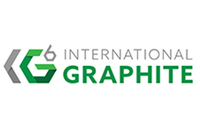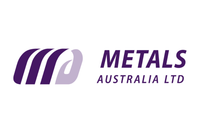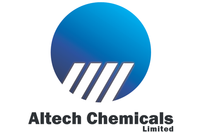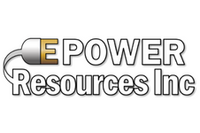Here’s an overview of the graphite market in H1 2020, and what market participants are expecting for the rest of the year.
Click here to read the latest graphite market update.
In a year where supply chain dependency has been under the spotlight, battery metals continue to receive significant attention.
Some market watchers remain optimistic about the future of graphite and its use in electric car batteries — at least for the next few years. Both synthetic graphite and natural graphite, in the form of the intermediate product spherical graphite, are currently used in the anodes of lithium-ion batteries.
But what has happened in the graphite market so far in 2020? Read on to learn about the main supply and demand dynamics in H1 and what market participants are expecting for the rest of the year.
Graphite market update: Key trends
The coronavirus pandemic impact took over the dynamics of every market during the first six months of the year, and that includes graphite.
Speaking with the Investing News Network about how COVID-19 has hit the graphite space, Benchmark Mineral Intelligence Product Director Andrew Miller said there has been some impact on the supply side, but largely to operations outside China.
“Chinese producers were quick to ramp up after Q1 closures, which coincided with a typical seasonal slowdown,” he said. “The bigger question in the market is how the new producers outside of China will cope with a prolonged low-price environment, and we’ve already seen some cutback production targets.”
For Miller, ultimately this is likely to see China gain an increasingly dominant position in the market and slow down any potential diversification of the supply chain in the medium term. China is by the far the largest producer of graphite.
Commenting on the impact of COVID-19 at a recent webinar, Suzanne Shaw of Roskill said that when looking at the distribution of the different types of graphite within China itself, most of the areas that are important for flake production and synthetic production are quite far from initial coronavirus epicenters.
“So there was quite limited impact and quite quick recovery in these areas, and this can be seen through China’s pattern of exports for the first few months of the year,” she said.
In terms of prices, so far COVID-19 has had a very minimal impact on graphite pricing.
“We’ve seen some impact on spherical graphite, but not a huge amount in historical terms; we could see some more impact to come, but actually price is probably likely to be more impacted by other issues going on than COVID-19, the changes in environmental issues being a huge concern,” Shaw said.
Supply-side restrictions are expected to play little part in the coming months, unless there are further COVID-19 outbreaks and a return to lockdown in China, according to Roskill.
“The industry is now watching the developments in Africa, Brazil and India to gauge any potential impact on supply chains,” said Shaw. “For the battery supply chain, another pinch point is the intermediate-stage production of anode material in Japan and South Korea, but these countries have been very resilient to the impact of the virus.”
Given the current market imbalance, Benchmark Mineral Intelligence expects supply cutbacks to continue for the remainder of the year, and possibly into 2021.
“Despite the current surplus, Chinese regional governments continue to target the graphite and anode markets as a strategic industry, and several major expansion plans remain underway,” he said. “These are unlikely to come to fruition this year, but it does mean that China’s supply base is being strengthened while other parts of the world are slowing output.”
In terms of demand, the battery side of the market has certainly proven more resilient to the market conditions, according to Miller.
The expert said the space continues to see significant anode material expansions in China, which will boost demand and stimulate a rebound in the domestic market.
“We are yet to see the full impact on industrial demand, but we expect that to become more clear in H2 and through into 2021,” he commented. “The rebound in these markets will likely be more prolonged than the battery sector.”
Despite the weak conditions in the space, the silver lining for junior miners is the stimulus measures being put in place in Europe and other parts of the world, which will require diversification of the supply chain outside of China.
“We’ve seen a number of partnerships between developers and anode or battery material producers downstream in recent weeks,” Miller said. “This shows there is a recognition that longer-term sustainability issues remain and companies are keen to incentivize new operations — particularly those with value-added capabilities.”
Graphite market update: What’s ahead
Looking ahead, graphite concentrate prices will remain at low levels for the majority of 2020 despite the capacity that has been taken offline, according to Benchmark Mineral Intelligence.
A significant market surplus will need to be overcome before there are sustained price increases.
“For anode feedstock pricing there is the interesting dynamic of synthetic input prices coming down considerably within China, making it increasingly competitive with natural graphite from a price perspective,” Miller explained.
“This price competition threatens to see greater price competition in the second half of the year and could reduce the premium on value-added products.”
For Roskill, reduced demand from COVID-19 has yet to translate into a major negative price impact.
“With global recovery expected in the coming months, especially for battery and electrode grades, and Chinese infrastructure stimulus, it seems likely that prices will not suffer in the long term,” Shaw said. “The exception is for refractory grades, where sluggish demand recovery will limit positive growth.”
Miller still expects to see double-digit growth in demand from 2022 onwards for the battery segment.
“Battery demand growth has slowed, and our estimates for 2020/2021 have been lowered, but with stimulus packages boosting the long-term battery market trajectory, and ongoing commitments from OEMs, the raw material requirements of the market continue to escalate,” he said.
Roskill also sees the graphite industry becoming increasingly focused on the battery market, with growth opportunity for both synthetic and natural.
“Battery demand for (raw material) graphite could grow by around 19 percent per year using Roskill’s base case for lithium-ion battery growth,” Shaw said.
She added that electrodes will remain by far the largest application for synthetic graphite, but demand for natural graphite in batteries could exceed demand from refractories by almost three times by 2030.
Roskill is expecting total graphite demand over the next 10 years to grow around 5 to 6 percent per year.
For investors interested in the graphite space, Miller said some of the factors to watch in the second half of the year are the approach of China and the potential consolidation of supply in Heilongjiang as China Minmetals ramps up its investments.
“Also the continued balance between natural and synthetic feedstocks in the anode sector and the supply chain partnerships that emerge as a result,” he added.
For Roskill, environmental costs will continue to play an important role in future supply chain trends and price development, including inspections/closures in China, a call for sustainable battery products and the effects of changing marine fuels on raw material availability for synthetic graphite.
“COVID-19 is only one of the major factors affecting the industry to 2030,” Shaw said.
Don’t forget to follow us @INN_Resource for real-time updates!
Securities Disclosure: I, Priscila Barrera, hold no direct investment interest in any company mentioned in this article.
Editorial Disclosure: The Investing News Network does not guarantee the accuracy or thoroughness of the information reported in the interviews it conducts. The opinions expressed in these interviews do not reflect the opinions of the Investing News Network and do not constitute investment advice. All readers are encouraged to perform their own due diligence.





